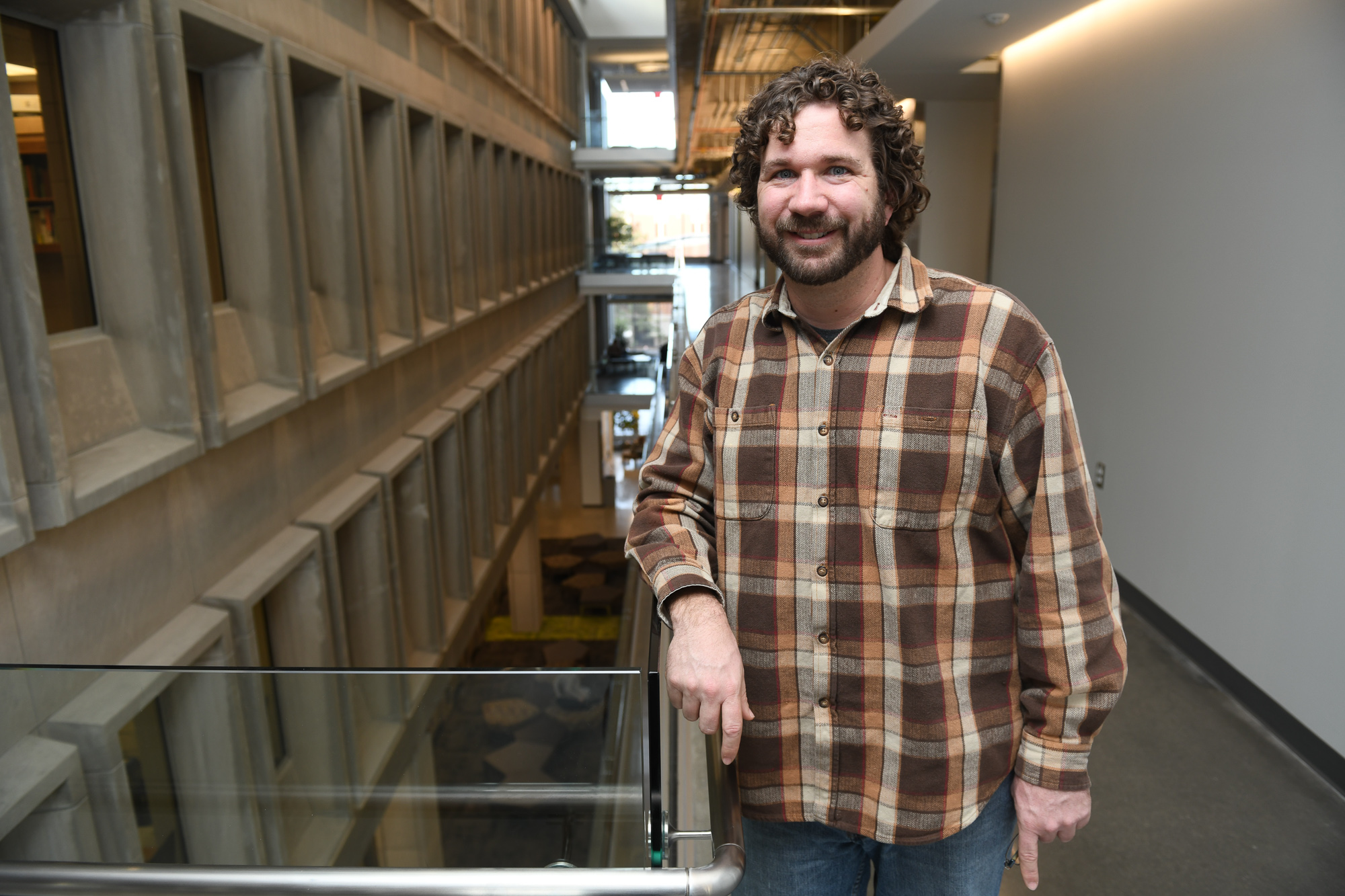
Daren Mueller, an Iowa State University Extension plant pathologist, shared that trial results between 2013 and 2019 found that planting resistant varieties decreased foliar disease and increased yields. (Photo: Joseph L. Murphy/Iowa Soybean Association)
Update on soybean diseases
January 28, 2021 | Bethany Baratta
Dry weather across the state slowed or stopped disease progression in soybean fields in 2020, but research continued to help farmers find effective treatment options to use when a more normal growing season returns.
Daren Mueller, Iowa State University (ISU) Extension plant pathologist, provided an update on soybean diseases during a presentation on CropsTV. This online program replaces the popular Integrated Crop Management Conference and Crop Advantage Series this winter. It’s sponsored in-part by the Iowa Soybean Association.
Sudden death syndrome
Results from product evaluation trials from 2013 to 2020 as part of the Crop Protection Network provided some insights into sudden death syndrome. Trials were conducted in Iowa, Illinois, Indiana, Michigan, South Dakota, Wisconsin and Ontario, Canada, to compare different products, timings and varieties for foliar symptoms and yield impact.
Trial results between 2013 and 2019 found a reduction in foliar disease prevalence by planting a resistant variety, resulting in a 15% increase in yield solely by using a resistant variety.
Results also showed that some seed treatments worked to reduce foliar diseases.
“Anything that’s applied foliar or after planting didn’t work,” Mueller said. “We have yet to find a product that you can spray v1 (first trifoliate) all the way to the end of the season that has worked.”
Trials between 2013 and 2018 revealed ILEVO as the most effective seed treatment, reducing the foliar disease index of SDS by 35% and increasing yield by 4.4 bushels per acre relative to a commercial base seed treatment that consisted of fungicide, insecticide, and biological nematicide products.
Trials in 2019 also looked at root rot as a significant player affecting yield. Again, ILEVO rose to the top as an effective weed treatment. It reduced foliar impacts by about 30% and root rot symptoms by nearly 20%.
Despite restrictions, there were 62 trial locations in 2020 within the Crop Protection Network which measured seed treatment response considering various risk levels.
“We asked collaborators to put trials in fields that were not necessarily ideal for SDS—we wanted to be in fields that were normal—low sudden death syndrome risk, high SDS risk, soybean cyst nematode (SCN) and combination everywhere in between. We wanted to see differences,” Mueller said.
Overall, Saltro and ILEVO showed effectiveness in reducing foliar symptoms and root rot.
“2020 is a good example of when you have SDS the management practices are going to have great difference; we just didn’t have a lot of SDS in 2020, so yield responses were not nearly as great as what we’ve seen in previous years,” Mueller said.
Fungicide resistance
With support from the soybean checkoff through the United Soybean Board, Iowa State University researchers evaluated foliar fungicides on soybean in 2020. Because dry weather affected all seven field locations, 2020 was really an evaluation of fungicides largely in the absence of disease, Mueller said.
Research shows that fungicide resistance for the frogeye leaf spot pathogen is widespread. A 2019 survey confirmed frogeye leafspot resistance in 50 of Iowa’s 99 counties.
“Frogeye leaf spot has really become a target for foliar fungicides across the U.S. and here in Iowa. The problem with that is fungicide resistance could be an issue,” Mueller said.
He says fungicide-resistant strains of the brown spot and Cercospora leaf blight pathogens have also been found in the United States. Fungicide resistance in the Cercospora leaf blight pathogen has not yet been confirmed in the state, but farmers should be aware of the possibility, he said.
Red crown rot, which causes deterioration of soybean roots and stems, is another soybean diseased Mueller is watching out for. It’s been confirmed in four counties in Illinois along the Mississippi River, but has not yet been confirmed in Iowa.
Back